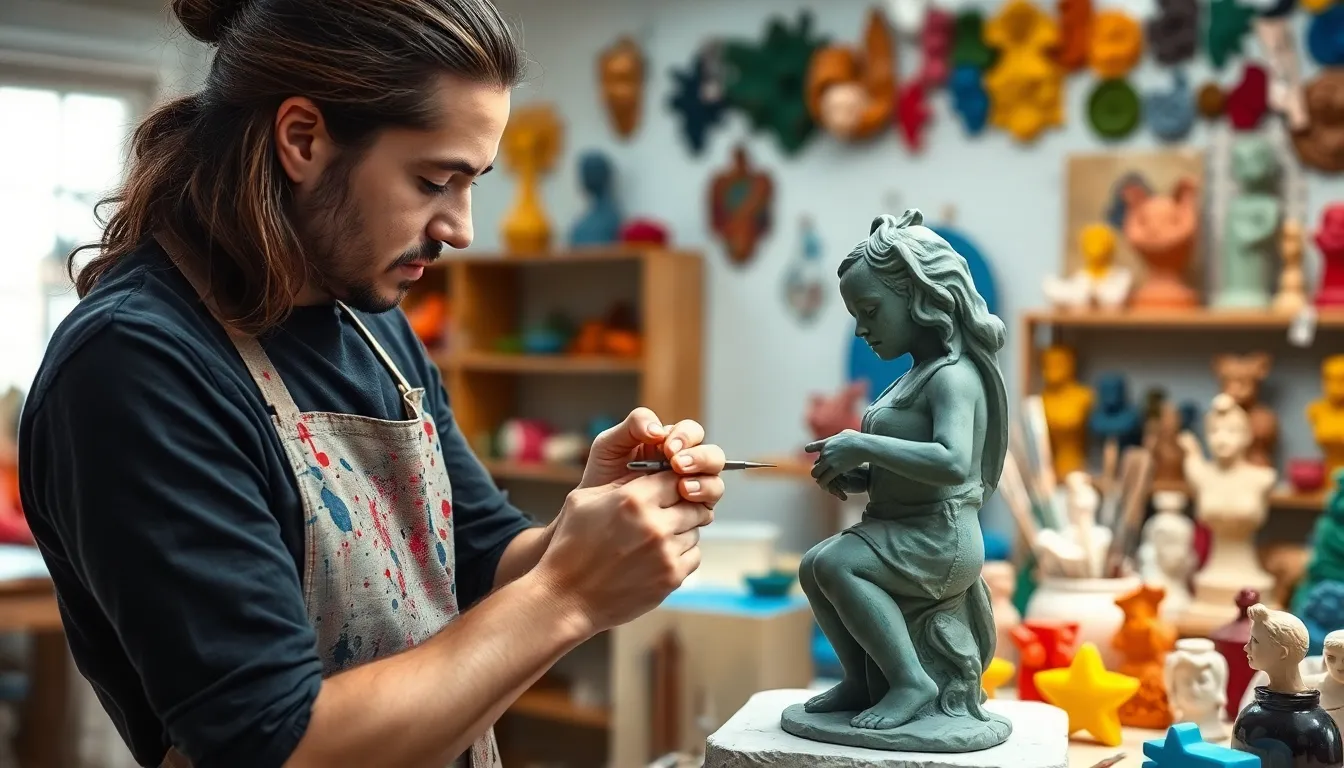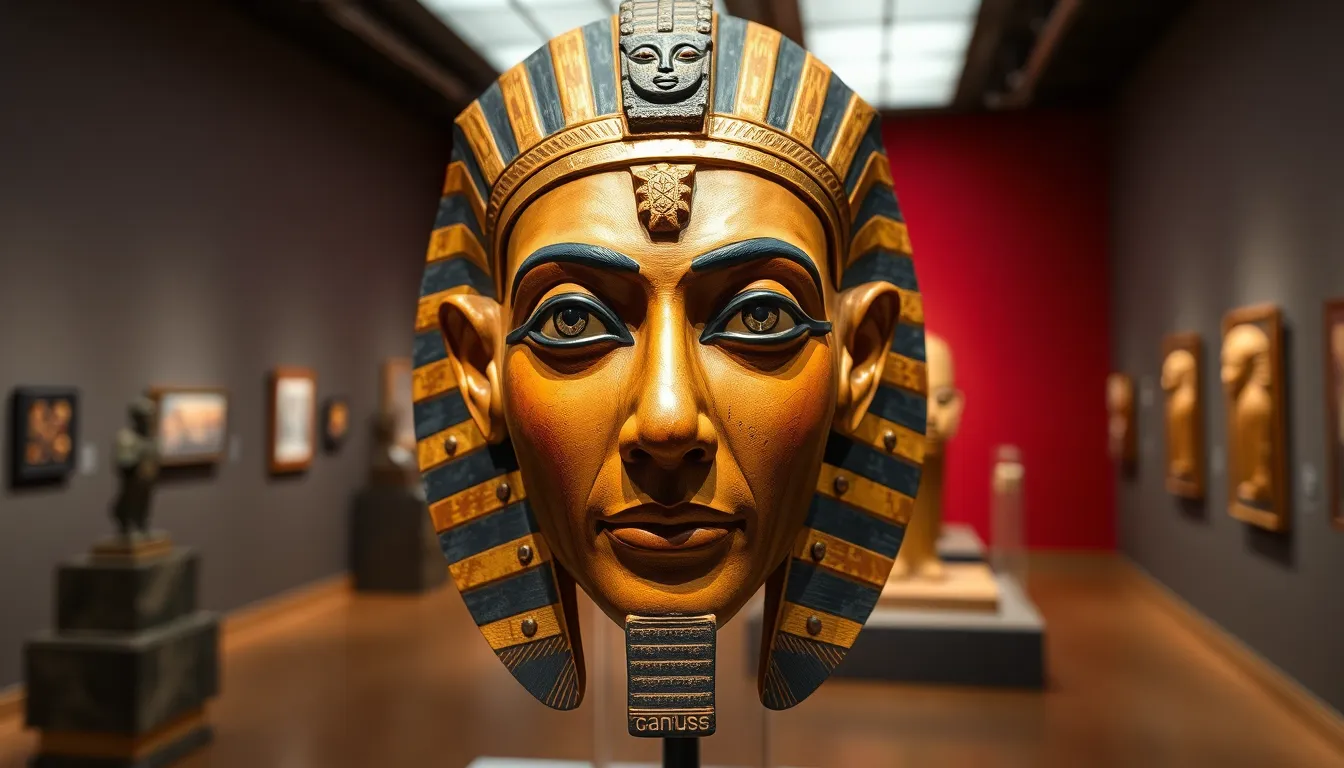Phone:
(701)814-6992
Physical address:
6296 Donnelly Plaza
Ratkeville, Bahamas.

Imagine a world where creativity melts into stunning masterpieces. Welcome to the colorful realm of wax art, where imagination takes shape and every drip tells a story. This unique medium combines the tactile joy of sculpting with the vibrant hues of color, turning ordinary wax into extraordinary creations that dazzle the eye and ignite the spirit.
Wax art encompasses the creative process of transforming wax into various artistic forms. Artists use wax as a medium, showcasing versatility in style and technique. Techniques include sculpting, painting, and pouring, allowing for a broad range of expression.
The creation of wax art often involves specialized tools, such as heat guns and molds. Sculptors manipulate wax to shape intricate figures or designs, while painters layer colors to enhance the visual appeal of their pieces. Waxes come in numerous types, including paraffin, beeswax, and soy wax, each contributing unique characteristics to the artwork.
The history of wax art traces back to ancient civilizations, where it appeared in decorative items and religious artifacts. Over time, artists have adapted classic methods, incorporating modern concepts and technology. Consequently, contemporary wax art often combines traditional techniques with innovative ideas, resulting in exceptional pieces.
Art enthusiasts appreciate wax art for its tactile quality and vibrant hues. Collectors seek unique wax sculptures and paintings that reflect the artist’s vision. Exhibitions frequently showcase these works, providing a platform for wax artists to gain recognition within the art community.
Environmental awareness has also influenced wax art, with artists increasingly opting for sustainable materials. This movement encourages the use of natural wax sources, promoting eco-friendly practices in art creation. By embracing sustainable choices, artists contribute to a more responsible art industry, while still captivating audiences worldwide.

Wax art has a rich and varied history, with its origins rooted in ancient civilizations.
Ancient cultures utilized wax for multiple purposes. Egyptians used it in funerary masks and as a writing surface. Greco-Roman artisans created wax figures for religious rituals and votive offerings. Additionally, beeswax served as a primary medium for ancient sculptors, showcasing its functionality. Notably, wax cylinders became essential for seal impressions and documenting transactions. Through these practices, wax demonstrated both artistic potential and practical applications.
The evolution of wax art spans centuries, reflecting changes in cultural practices and artistic techniques. During the Middle Ages, churches employed wax in intricate altar sculptures and candle-making. The Renaissance marked a shift, with artists experimenting with wax models for sculpture studies. As the Industrial Revolution advanced, new materials emerged, yet artists continued embracing wax for its versatility. In contemporary times, innovative technologies have further expanded the possibilities, merging traditional methods with modern aesthetics. This evolution highlights the enduring appeal of wax as an artistic medium.
Various techniques define the artistry in wax, enabling creators to showcase their talents. Among these, carving and casting stand out as essential methods in the craft.
Carving involves shaping wax into detailed forms using specialized tools. Artists begin with blocks of solid wax, gradually removing material to create desired shapes. Multiple techniques exist within carving, such as whittling and chiseling, ensuring intricate designs manifest clearly. Artists often choose softer waxes for delicate details or harder waxes for structural integrity. Both the variety of tools and the artist’s skill level impact the final outcome significantly. Projects may range from sculptures to ornate candle holders, highlighting the flexibility of this technique in storytelling and form.
Casting allows artists to create multiple copies of a design through molds. This method starts with heating wax to a liquid state before pouring it into a pre-made mold. Artists often utilize silicone or metal molds, designed to accommodate various shapes and complexities. Once the wax cools, it solidifies into a precise replica of the mold’s interior. This technique broadens the artist’s ability to produce unique pieces on a larger scale. Different types of wax can be used based on project requirements, such as achieving specific textures or colors. Casting combines traditional practices with modern technology to push creative boundaries.
Wax art manifests in various forms, each showcasing distinct techniques and styles. Artists leverage these types to express creativity and innovate within the medium.
Sculptures represent one of the most engaging types of wax art. Artists carve wax into intricate forms, employing specialized tools for detailing. Paraffin and beeswax frequently serve as popular materials, each offering unique properties. Artists create everything from life-sized figures to abstract designs using carving techniques. These sculptures often capture emotional depth and intricate patterns, inviting viewers to appreciate their complexity. Unique sculptural methods include layering and texturing, which add dimension and character to each piece.
Candles also embody a captivating facet of wax art. Artists create aesthetically pleasing candles by using colored wax and various molds. Crafting candles involves pouring melted wax into shapes or containers, allowing for creativity in design and scents. The selection of soy wax, beeswax, or paraffin influences the final product’s texture and aroma. Seasonal themes and personalized messages often inspire candle designs, making them versatile gifts. Additionally, techniques like layering and embedding materials enhance the visual appeal, making these functional art pieces highly coveted.
Creating wax art offers numerous benefits that cater to various artistic interests. Engaging in this medium stimulates creativity and expression, allowing artists to explore their imagination. The tactile nature of wax encourages hands-on experimentation, leading to unique outcomes that inspire further innovation.
Enhanced focus and mental well-being can arise from working with wax. Many artists find that crafting with wax serves as a form of therapy, offering a tranquil escape from daily stresses. The process of sculpting, pouring, or carving provides a meditative experience that promotes mindfulness and concentration.
Flexibility in techniques yields versatility in artistic representation. Artists can choose from carving, casting, and pouring to achieve their desired effect. Each method allows distinct aesthetics, appealing to different creative preferences.
Environmental sustainability stands at the forefront of modern wax art practices. Artists increasingly use biodegradable materials, such as soy wax and natural dyes, which contribute to eco-friendly projects. This trend reflects a growing commitment to responsible art-making, aligning with consumer demand for sustainable practices.
Community engagement benefits artists as well. Wax art often encourages collaboration through workshops and art shows, fostering connections among creatives. Participants gain valuable feedback, leading to personal and artistic growth.
Unique masterpieces become attractive to collectors and enthusiasts. Individuals seek one-of-a-kind wax creations that embody the artist’s vision and skill. This demand enhances the visibility of wax art, promoting recognition within the broader art community.
Overall, the act of creating wax art not only enriches individual experiences but also nurtures a vibrant artistic ecosystem that thrives on collaboration and sustainability.
Wax art stands as a testament to creativity and innovation. Its rich history and evolving techniques showcase the enduring appeal of this unique medium. Artists continue to push boundaries by merging traditional methods with modern aesthetics, creating pieces that resonate with both collectors and enthusiasts.
The tactile nature of wax encourages exploration and experimentation, allowing artists to express their visions in vibrant hues and intricate designs. As the focus on sustainability grows, the future of wax art looks promising, with eco-friendly practices paving the way for a responsible artistic community.
Ultimately, wax art not only captivates the eye but also enriches the soul, fostering a deeper connection between art and the viewer.